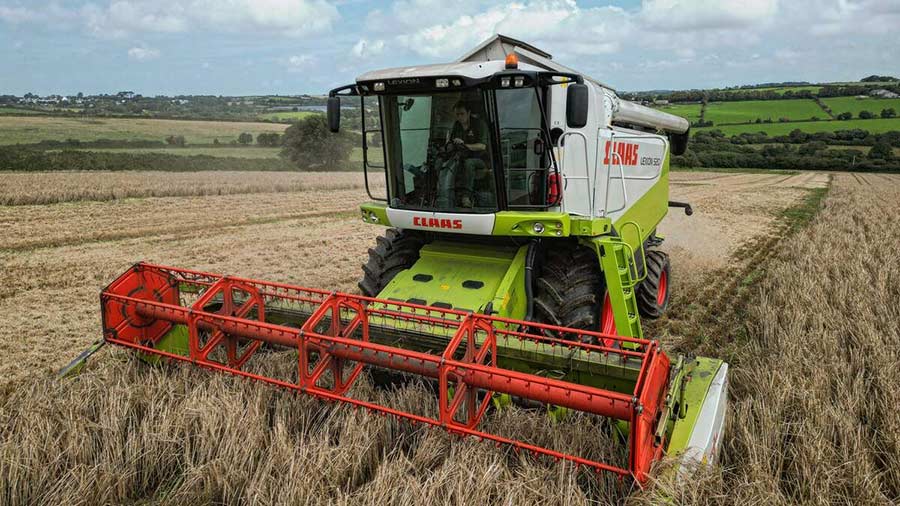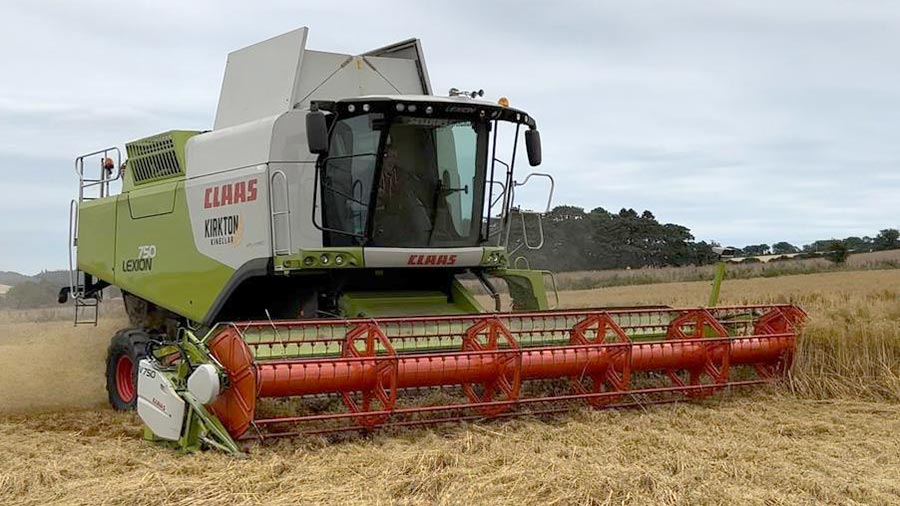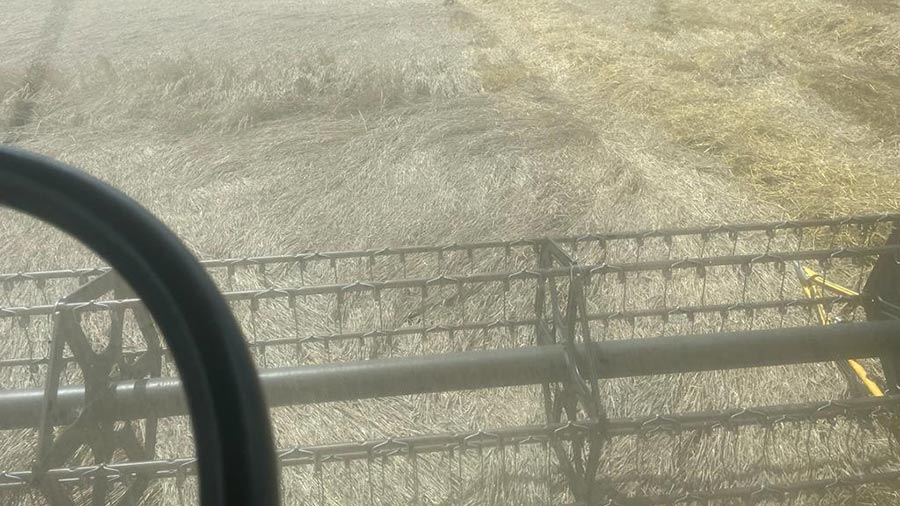Harvest highlights: High moisture contents and lodged crops
 © Noah Kerkin via Farmers Weekly's Harvest 2023 gallery
© Noah Kerkin via Farmers Weekly's Harvest 2023 gallery Weather conditions have drastically slowed harvest, with lodging difficulties delaying the combines.
A sliver of light is that overall winter barley yields concluded well this season.
See more: Harvest 2023: The 5 top-yielding winter OSR varieties map
Aberdeenshire
At Kirkton Farm near Kinellar, Scott Cambell has harvested 36ha of winter feed barley, comprising two-row variety Tardis and six-row hybrid Kingsbarn.
Scott is impressed with yields of up to 10t/ha, with moisture averaging 19%. Specific weights of 64kg/hl and 67kg/hl were achieved, with the two-row slightly outperforming the hybrid.
Most recently, Scott cut 27ha of “challenging to combine” winter oats, which yielded roughly 8.7t/ha despite lodging.
“It was very wet on Monday [7 August] and it was a slow cut,” he explains.
“But with some sun and wind, I managed to finish about mid-afternoon on Wednesday [9 August].”
Combined at 15-18% moisture, the crop averaged 54kg/hl specific weight.
Adapting the combine to oilseed rape kit that evening, Scott started cutting his 67ha of oilseed rape at 7am, finishing at 1am. Moisture content averaged 12.5% and, although it is early days, he predicts yields of 4.4t/ha.

© Scott Campbell
Cambridgeshire
At Bartlow Estate near Linton, farm manager Richard Cobbald has got 200ha of the hybrid winter barley feed varieties Bazooka and Kingsbarn safely in the barn at a good yield of 9-10t/ha.
He then went into more than 400ha of Acacia and Aardvark oilseed rape, which averaged 8-12% moisture content and so required drying.
The crop has been largely disappointing, with an average yield of 1.5t/ha – and the best field producing 3.3t/ha.
Cabbage stem flea beetle is a high pest pressure in the area and it took no prisoners this year, with stem weevil and pigeons compounding the issues by causing a “biblically” bad hit.
“At Christmas it looked fantastic, then weevil damage killed plants off two weeks after a bad frost,” he says.
But despite the bad year, Richard is giving oilseed rape another go, and has drilled 121ha which is establishing well.
He has also combined more than 200ha of Group 1 milling wheat variety Crusoe, with moisture upwards of 16.5%.
In terms of yields, it has achieved a middling 9.3t/ha, averaging 350 Hagberg and 13.3% protein. “The weather denied an epic wheat harvest,” he says.
Somerset
At Windmill Farm near Yeovil, Chris Baker has cut 16ha of Tardis feed winter barley at 15.5% moisture, 6t/ha and 69kg/hl specific weight.
“I thought the winter barley looked poor, but it was OK,” says Chris.
Then came 45ha of Group 2 milling wheat Extase, which Chris went into on 9 August – currently it is yielding 8t/ha at 14.5% moisture.
“It’s been good,” he says. “I am looking for more yield in other fields, but I have got some flat stuff I’m struggling with.”
After some failed experimentation, his plan of action is to change the angle of the reel tines so that crops get pushed into the header better.
Next, Chris will be combining 5ha of Planet spring barley, which was drilled where some of his winter barley failed. It will be grown as feed for his beef cattle.
Later in the harvest he will get to his 8ha of Lynx spring beans.

© Chris Baker
Powys
At Broniarth Farm near Newtown, Paul Philips uses all of his cereals as low-cost feed for his cattle and sheep.
The 12ha of winter barley was ready in the first week of July, but with catchy weather it didn’t get cut until silaging was complete. Averaging yields of 5.5t/ha, it was cut at about 15% moisture. “We lost 0.75t/ha to brackling,” says Paul.
Next, he is just finishing 6ha of Southwark winter oats; so far one field has yielded 8t/ha, following grass.
But he expects lower yields on the continuous cereals land. He has also made some way into 13ha of hard feed wheat Graham, which has seen yields of 7.5t/ha.

